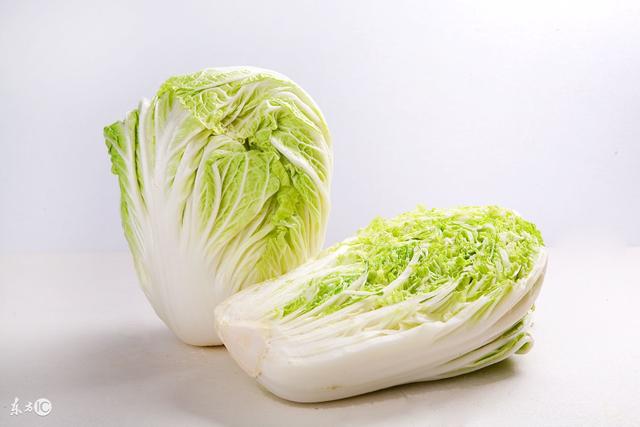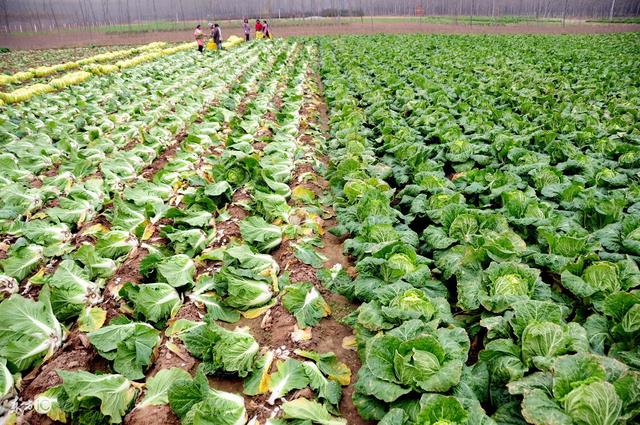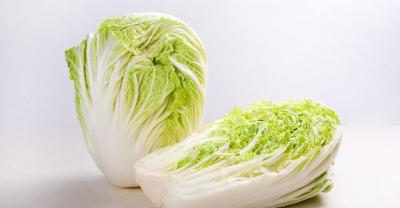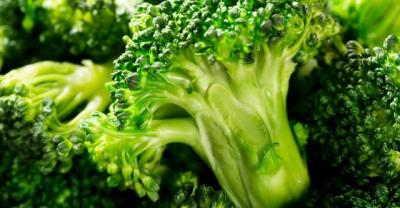High-yielding planting techniques of Chinese Cabbage
Chinese cabbage, also known as heading Chinese cabbage and yellow bud white, originated in China. China is also rich in variety resources, with a high yield of 3500-4000 kg per mu and more than 5000 kg high, with tender leaf balls, rosette leaves or flower stems for eating. the cultivation area and consumption rank first among all kinds of vegetables in China.

Botanical characteristics of Chinese cabbage
The root system of Chinese cabbage is well developed, and the radicle can form a fleshy taproot. The main root is slender, up to 0.7 meters long, the lateral root has many branches, and each fine root bears a large number of root hairs at the end. The stem of Chinese cabbage is divided into young stem, short stem and flower stem. The young stem is the epicotyl part of the cotyledon stage, and the cotyledons fall off and become the main root part. The length of young stem is an important sign to identify whether the seedlings in cotyledon stage are strong or not.
The flowers of Chinese cabbage are infinitely growing racemes. The length of inflorescence varies from variety to variety. The fruit is siliques, cylindrical, with two ventricles, with a diaphragm in the middle, and seeds planted on both sides.
Chinese cabbage
Planting conditions of Chinese cabbage

1. Temperature: Chinese cabbage prefers mild climate. Seeds can germinate at 8-10 ℃ and germinate quickly and healthily at 20-25 ℃. The optimum temperature during the growth period is 10-22 ℃ (18-22 ℃ for outer leaves and 12-16 ℃ for heart leaves). When the temperature is above 25 ℃, it can not adapt, when it is below 10 ℃, it grows slowly, and when it is below 5 ℃, it suffers frost injury.
2. Lighting: Chinese cabbage needs plenty of sunlight, and the lack of light will seriously affect the yield.
3. Soil: Chinese cabbage is more tolerant to fertilizer and requires higher soil moisture and air humidity. It is suitable for planting on the soil with loose fertility, strong water and fertility conservation and good drainage, especially in the heading stage, giving sufficient water and nitrogen fertilizer. It plays an important role in increasing yield.
Chinese cabbage
Planting techniques of Chinese Cabbage

1. Cultivation season: early-maturing varieties are generally sown in the early and middle of August, and some are sown as early as late July. Medium-maturing varieties can be sown from late August to early September. Late-maturing varieties should be sowed in late August.
2. Land selection and preparation: continuous cropping of Chinese cabbage is prone to disease, so it is necessary to carry out rotation, especially advocating rotation of grain and vegetable, rotation of flood and drought. In the perennial vegetable field, continuous cropping with cruciferous vegetables should be avoided, and the previous stubble should be cultivated in the fields of early bean, early pepper, early cucumber and early tomato. The land for growing Chinese cabbage should be ploughed 20-27 cm deep for 10-15 days, and then the land should be smashed and leveled into beds 1.3-1.7 meters wide, or 0.8 meters narrow and high. When making a border, it is necessary to deep open the border ditch, waist ditch, surround the ditch more than 27 cm, so that the ditch is interlinked.
3. Heavy application of base fertilizer, mainly Yongchun ecological carbon-based fertilizer: in mid-and late July, after the previous harvest, turn the soil deeply into the Kang land, and sprinkle 100-150 kg of lime per mu during soil preparation. In the land where root swelling disease occurs, an appropriate amount of lime must be applied in the sowing ditch. It is required to re-apply base fertilizer and mix well with nitrogen, phosphorus and potassium. In the first ten days of July, fertilization with 5 to 10 kilograms per mu of Yongchun carbon-based fertilizer can effectively increase yield and improve soil.

4. Sowing: Chinese cabbage generally uses direct seeding, but also can raise seedlings and transplant. Live broadcast is dominated by strip broadcasting, supplemented by on-demand. In order not to affect the cultivation season, seedling raising and transplanting can also be used when the previous stubble land is not available for a while. No matter which method is used, the soil must be fine and flat. The amount of seed used for direct seeding is about 200 grams per mu. Seedling transplant, each planting 1 mu of field, about 5-6% of the seedbed, multi-use sowing method, with a seed amount of 75-100 grams. After the direct broadcast, 40-50 per mu was used to bear the manure and urine of mature people, combined with the ground cover. Since then, watering once every morning and evening to keep the indigenous soil moist, seedlings can emerge in 3-4 days. The row spacing of Chinese cabbage should be determined according to different varieties. Generally, early-maturing varieties are 33-50 × 33 cm, with 2100-2300 seedlings per mu, and late-maturing varieties are 67-50 cm, with less than 2000 seedlings per mu. The best choice for seedling transplanting is cloudy or sunny evening. In order to improve the survival rate, it is best to transplant seedlings with soil and pour fixed root water after planting.
5. Field management
① interseedling: 2-3 true leaves, the first seedling, 5-6 leaves time the second seedling, 7-8 leaves can be fixed seedlings. Different row-plant spacing was selected according to different varieties, and one strong seedling was left in each hole. Weeding can be combined with seedlings.
② topdressing: after Chinese cabbage is planted and survived, you can start topdressing. 15% of rotten human feces and urine are collected every 3-4 days, with a dosage of 4-5 piculs per mu. Look at the weather and soil dry and wet conditions, the human feces and urine mixed with water, Chinese cabbage into the rosette stage should increase the concentration of fertilizer, usually every 5-7 days, a pursuit of 30% of mature human feces and urine, 15-20 piculs per mu, vegetable withered or withered 75-100 kg. After the beginning of heart care, the re-application of topdressing and potash fertilizer is a necessary measure to increase production. You can communicate with Professor Liu Cunshou's carbon-based fertilizer Weixing scqsqvip, which can apply 30-40 piculs of mature human manure per mu, and trench to apply 100kg of plant ash, or 10-15kg of potassium sulfate. This time fertilizing vegetable farmers is called "heart-filling". If there is no these farm manure, use Yongchun carbon-based fertilizer, 5 to 10 kilograms at a time, once every half a month.
③ ploughing and soil cultivation: in order to facilitate topdressing, loosen the soil in the early stage and weed 2-3 times. Especially after a long time of rain and sunshine, the Kang field should be ploughed in time to promote the growth of the root system. In the middle of the rosette, cake fertilizer was applied to cultivate the soil in the middle stage of the rosette, which was 10-13 cm high. The main purpose of cultivating long is to facilitate fertilization and watering and reduce diseases. After the cultivation of manure into the furrow irrigation, can not stick to the leaf sign, water into the ditch irrigation, do not soak the part. At the same time, the air circulation in the ditch was maintained and the air humidity between plants was reduced. In this way, the occurrence of soft rot can be reduced.
④ irrigation: Chinese cabbage should be watered frequently and moisturized at seedling stage, intermittent irrigation during rosette period, dry and wet, proper seedling training, high water requirement when heading, and furrow irrigation can be used when the soil is dry. Irrigation should be carried out in the evening or after the ground temperature drops at night. Pour it in slowly and do not fill the bed. After the water seeps into the soil, the residual water should be discharged at extreme times. So that there is no water in the ditch, there is no water on the border, and there is no shortage of water in the root system. Generally speaking, from the end of the rosette stage to the middle heading stage, keeping the soil moist is one of the keys to the high yield of Chinese cabbage.
⑤ bundles and mulch: the balding of Chinese cabbage is the inevitable law of its growth and development, and there is no need for bundles. However, if late-maturing varieties encounter severe cold, in order to promote good heading and delay harvest and supply, Lesser Snow picked up the outer leaves, tied them with straw, and covered them with a layer of straw-like agricultural film, which could protect the heart leaves from freezing damage and soften them. Early-maturing varieties do not need foliage and mulching.
Chinese cabbage
Control of diseases and insect pests in Chinese cabbage
The main diseases and pests of Chinese cabbage are: soft rot, Spodoptera litura and so on.
1. Soft rot
[symptoms] soft rot is also called rotten pimples. Most of them began to develop the disease in the pericardial stage, and most of the outer leaves were drooping in the early stage of the disease, but they still recovered sooner or later. with the development of the disease, these diseased leaves no longer recovered and exposed the leaf ball. The disease spot is flooded, and the tissue of the disease part becomes brown, rotten and slippery, with a bad smell.
[prevention and control methods] the principle of comprehensive control and giving priority to prevention was adopted, and the specific method was to implement crop rotation in ①. Where conditions permit, it is appropriate to use flood and drought ships. Do not apply diseased organic fertilizer. It is necessary to turn deeply into the sun and control the source of the bacteria. The implementation of high border cultivation in ② is beneficial to drainage and waterlogging prevention and can reduce the occurrence of diseases. ③ rational irrigation and fertilization: apply sufficient base fertilizer and topdressing in time to make the seedling grow vigorously and enhance the ability of disease resistance. ④ timely removal of diseased plants: removal of diseased plants can reduce the source of bacteria and prevent the spread of bacteria. Especially before irrigation, it should be checked and dealt with in time. The burrow was sprinkled with lime for sterilization. ⑤ pay attention to pest control: avoid causing wounds to prevent germs from invading. The disease-resistant varieties were selected in ⑥: the general Qingbang varieties and the first generation of hybrids had strong disease resistance. ⑦ chemical control: you can choose the following pesticides: agricultural streptomycin per packet of water 100kg or 70% dioxone 600x irrigation root, or 20% Longke bacteria 600x or 47% plus Renong 800x once a day for 2-3 times.
2. Spodoptera litura
[harmful symptoms] Spodoptera litura, also known as hemp worms and leaf-bearing insects, gnaws on the back of the leaves with newly hatched larvae, leaving only the upper epidermis and veins, and the injured leaves look like "screen windows". When the larvae grow up, they eat the leaves, and in serious cases, they can eat up the whole leaves and even bite off the young stems.
[control methods] Spodoptera litura has the characteristics of omnivorous, fulminant, strong fecundity, and strong drug resistance of aged larvae, so it is necessary to kill moths and pupae, remove eggs, and control 1st and 2nd instar larvae in time.
- Prev

The planting method of baby vegetables
Growing vegetables on the balcony is about a healthy life. If you spend the whole day in front of a computer or TV, you might as well make a variety of dishes. Baby dishes are very delicious.
- Next

Planting method of potted okra
First of all, choose the flowerpot, according to your hobby, the flowerpot can be big or small, then install the seedling soil, pour through the water, we put the selected seeds into 3 into half.
Related
- Fuxing push coffee new agricultural production and marketing class: lack of small-scale processing plants
- Jujube rice field leisure farm deep ploughing Yilan for five years to create a space for organic food and play
- Nongyu Farm-A trial of organic papaya for brave women with advanced technology
- Four points for attention in the prevention and control of diseases and insect pests of edible fungi
- How to add nutrient solution to Edible Fungi
- Is there any good way to control edible fungus mites?
- Open Inoculation Technology of Edible Fungi
- Is there any clever way to use fertilizer for edible fungus in winter?
- What agents are used to kill the pathogens of edible fungi in the mushroom shed?
- Rapid drying of Edible Fungi

